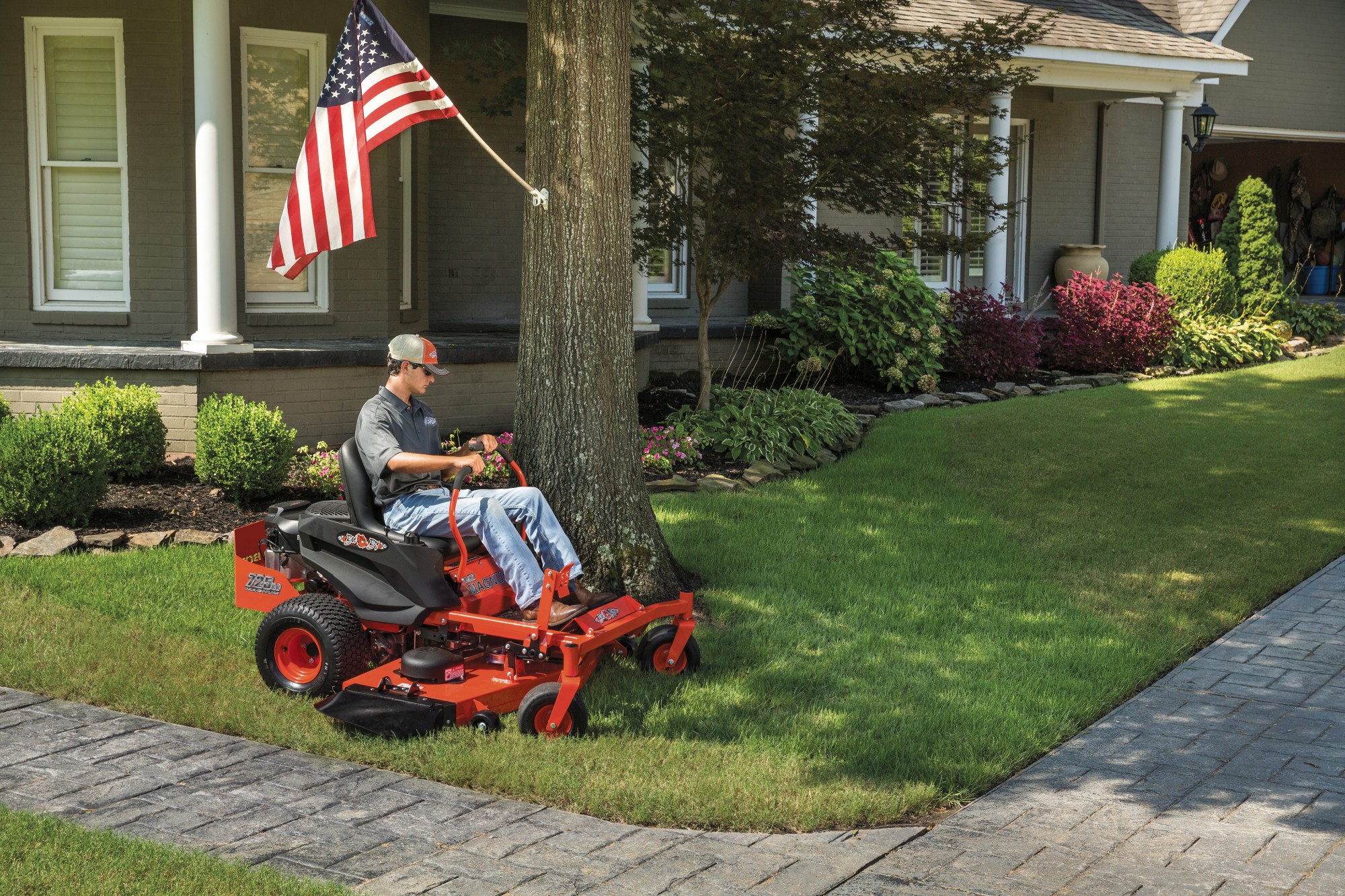So you’ve decided that your days of pushing a mower are over. Time to sit back, relax, and drive your way to a fresh-cut lawn. But what equipment should you choose?
Today’s lawn warriors have a variety of options to select from, and those machines generally fit under two categories: the traditional riding lawn mower and the zero turn mower.
Traditional Riding Mower
You’re probably most familiar with the traditional, tractor-style riding mower, which has been around for about one hundred years.
Pros:
- A riding mower has a familiar steering wheel and foot pedal brake, just like a car. Learning how to drive it is a breeze!
- A riding mower is perfect for mowing large, open areas, such as fields and open, spacious backyards.
- Because the riding mower has been around for so long, there is a large variety of models and brands, keeping price points competitive.
- A riding mower is versatile, allowing for spraying, spreading, and other garden attachments. It can even double as a snow plow!
Cons:
- Because a riding mower has a larger turning radius, getting to the ends of rows and turning 180 degrees not only leaves uncut patches, but increases mowing time.
- Riding mowers average 3-5 miles per hour, slower than zero turning radius mowers.
Zero Turn Radius Mowers
A zero turn radius mower, or ZTR, is a newer technology, featuring a zero-inch radius that allows you to pivot on a dime.
Pros:
- A ZTR can turn within its own track, allowing for a much more precise - and faster - mowing time. No need for 180-degree turns that leave patches of uncut grass behind.
- ZTRs reach speeds of 5-8 miles per hour, faster than the traditional mower’s 3-5.
- ZTR’s easy pivoting makes it a good option for more complicated landscaping that features rocks, trees, and other objects that require detailed maneuvering.
- Since a ZTR’s engine is in the back, not the front, it’s easier to see where you’re mowing–another plus for detailed landscaping.
Cons:
- The ZTR may present a steeper learning curve for new riders, as it features two handles rather than a familiar steering wheel.
- The technology involved in developing a zero turning radius makes the product generally more expensive than a traditional riding mower.
Have more questions about what mower is right for you and your landscape? Contact us for more information about our extensive selection of riding mowers and ZTRs.



